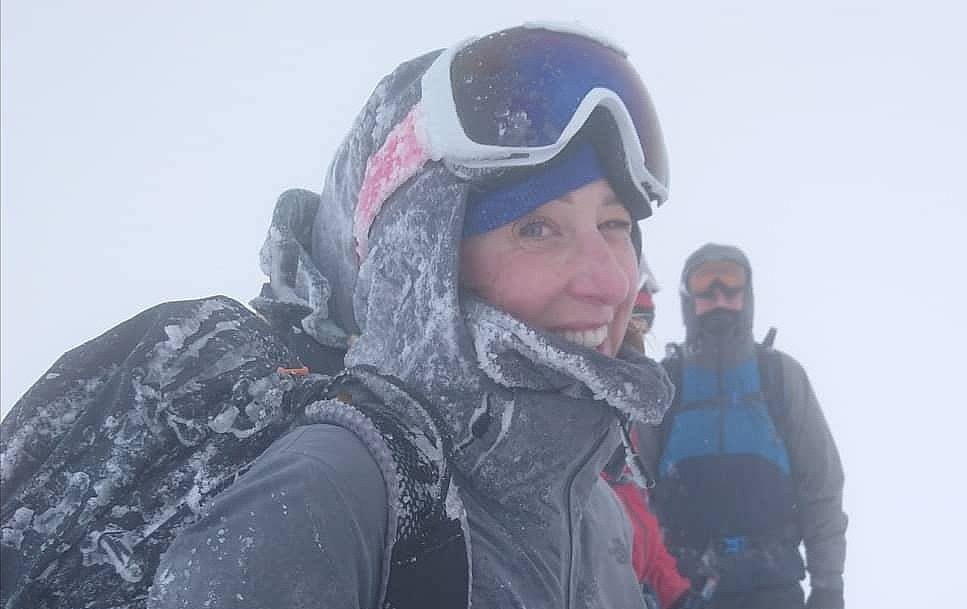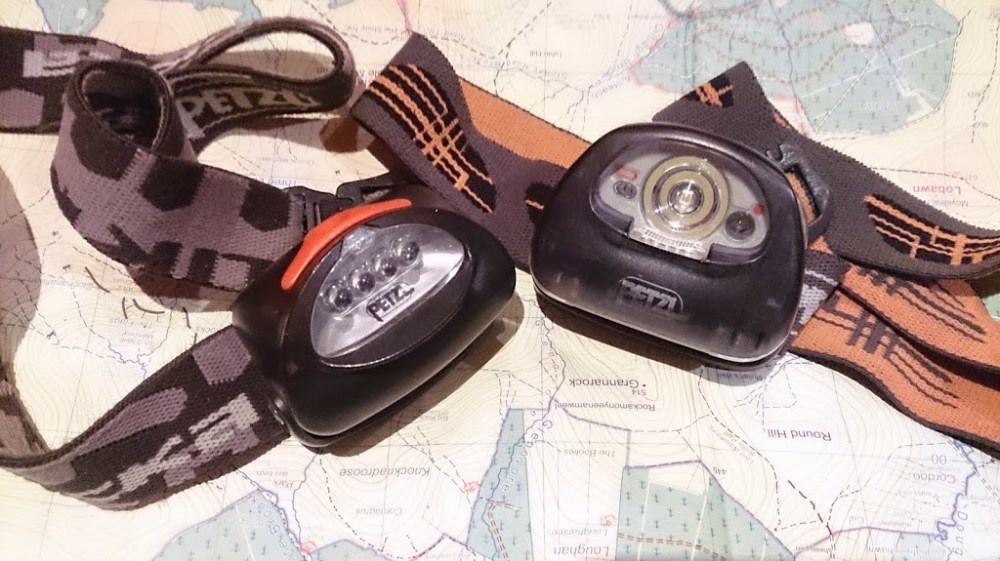Winter Hiking – The Essentials

Winter has well and truly arrived in our mountains and brought with it the inherent problems of poor visibility, cold weather and challenging terrain. To ensure you don’t get caught out when venturing into the winter hills it’s time to prepare for the harsher hiking conditions to come.
Here is a check list of the things to consider before heading out.
DRESS TO IMPRESS
Make sure you are dressed for the conditions you are likely to meet when winter hiking. Warm and wicking baselayers are a must, they will keep you dry and comfortable close to your skin. Remember cotton is not acceptable to wear in winter as it holds moisture (sweat) which will chill your body once you stop working hard. Marino wool is very popular for winter baselayers, as is woven polypropylene or polyester fabrics.
Hybrid merino/polypropylene mix baselayers are available to give the optimum mix of comfort, warmth and moisture wicking.
Your mid layer should provide insulation, consider replacing the mid layer fleece with a light synthetic insulated jacket, or maybe fibre pile to make sure you are warm enough.

Be prepared for the worst..!
Softshell pants (trousers) that will protect from cold winds and keep off a shower or two are essential, but you must also have reliable waterproof pants in your pack, for when the weather gets nasty.
Make sure your waterproof jacket is up to the job, reproof if necessary, or upgrade if it is no longer keeping the rain out. Check out our blog on waterproof jackets here: https://mountaintrails.ie/waterproof-jacket-not-waterproof/
Good hiking boots are essential in winter, they should have a have an aggressive sole pattern for good grip in the wet and offer good support around the ankles in case of slips. Most importantly your boots should be waterproof, either incorporating a waterproof inner layer such as goretex or being constructed primarily of leather.
Remember to clean your boots regularly, dry them, and reproof with wax.
Gaiters are a useful addition in winter to keep the snow out of your boots and trousers and to protect your lower legs from wet and mud.
WINTERIZE YOUR PACK
Make sure you have packed your rucksack with winter hiking conditions in mind.
Be prepared for the reduced daylight hours by packing a fully charged headtorch, and take a spare if you have one, just in case.

Always pack a torch when hiking in the winter months
Change your lightweight summer gloves for insulated winter gloves, take multiple pairs as it is so easy to lose one and you will be in difficulty without spares. It’s also great to be able to change into dry gloves at lunchtime..!
See here for glove advice (https://mountaintrails.ie/winter-gloves-making-the-right-choice/)
Oh, and don’t forget to take a warm beanie hat.
Upgrade the spare layer in your pack to a synthetic insulated jacket, down works best in cold and dry conditions but doesn’t work at all well if it gets wet. A synthetic jacket can be put on over your existing layers, even in the wet, and will provide vital warmth if you are forced to make an unscheduled stop.
Pack an emergency shelter if you have one, a 1 or 2 person shelter is ideal for exposed lunch stops or emergencies, and larger group shelters are available for leaders and clubs.
Ski goggles are a useful addition to your pack, they will protect your eyes from wind driven sleet and snow and add extra insulation for your face.
Put the kit that must stay dry in drybags inside your rucksack, and for extra insurance against the wet, put a rucksack liner or plastic sack inside your pack.

Goggles are a great defence against wind driven sleet and snow.
UP YOUR NAVIGATION GAME
Make sure your navigation is up to the job in winter. The conditions mean you are more likely to encounter hill fog, rain and low cloud.
Do not underestimate how difficult navigation can become in these conditions. Reading your map will become more difficult, big gloves will make manipulating your compass more challenging.
Don’t rely on your phone for navigation. It may get very cold and the battery may fail, and if it gets wet it becomes almost useless. The touch screen is impossible to use with bulky gloves on.
You are going to be relying a lot on your compass, so it makes sense to pack a spare, and that goes for your map as well.
Practice your poor visibility navigation before you go, don’t rely on your memory of some long forgotten course, and if you are not sure of your skills then get some training.

PLAN AHEAD & BUDDY UP
If you are planning on winter hiking, make sure you have a clear and defined objective and a route marked on your map, writing out a route card really helps with this. Be prepared to change this if the conditions deteriorate and don’t forget to have your escape route ready.
Don’t go it alone, it’s a good idea to hike with a buddy in winter, so you can check your navigation together and discuss crucial decisions.
Always keep an eye on the conditions in the mountains. Check the weather forecasts regularly in the days before you plan to hike, and plan and prepare accordingly. On the hike keep checking the ground conditions, is it getting icy and slippery for example, or is the wind getting up and is it much colder than you anticipated.?
Never be afraid to turn back.
In mountainous terrain, in full winter conditions where there is a lot of snow and ice around, you will need specialist training in the use of ice axe and crampons and you will need winter specific boots. These conditions are rarely experienced in Ireland, but do occur from time to time, so if you are considering heading out in these conditions you should invest in a winter mountaineering course.
